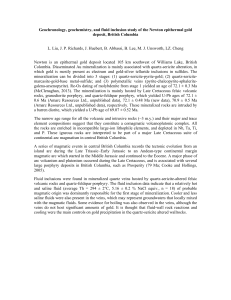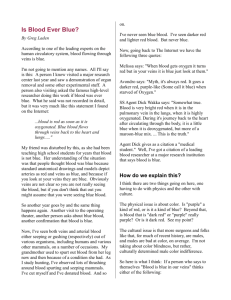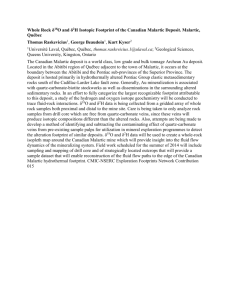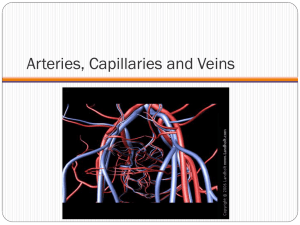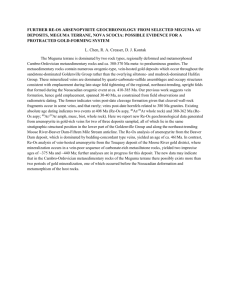The Brucejack Porphyry-Related Epithermal Au Deposit
advertisement
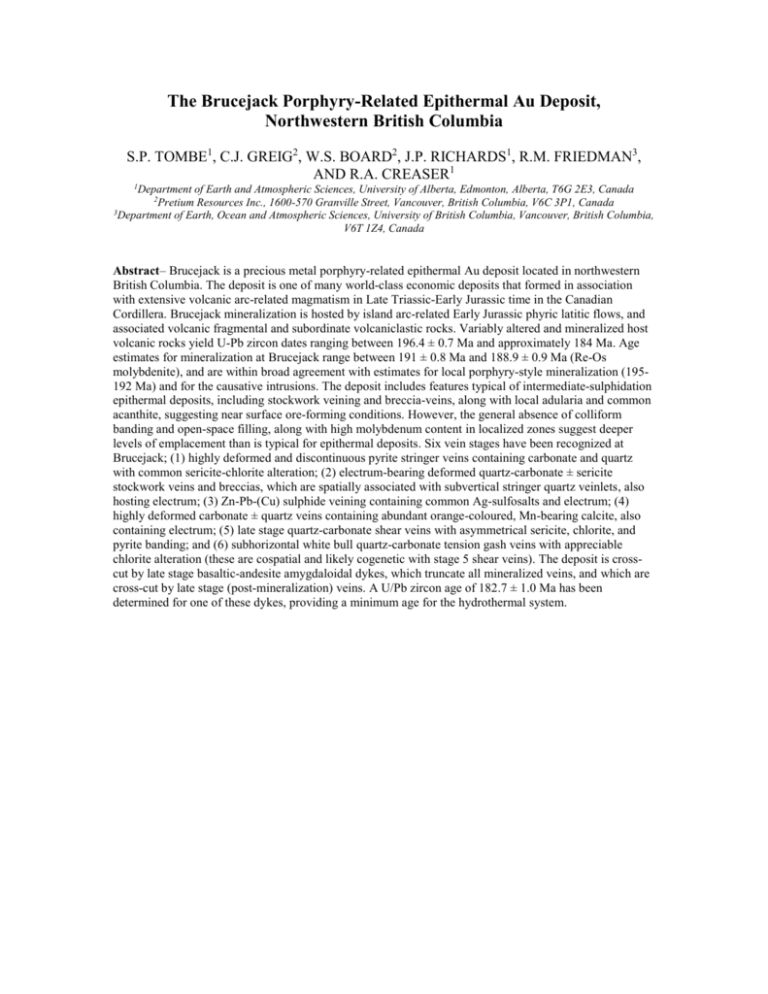
The Brucejack Porphyry-Related Epithermal Au Deposit, Northwestern British Columbia S.P. TOMBE1, C.J. GREIG2, W.S. BOARD2, J.P. RICHARDS1, R.M. FRIEDMAN3, AND R.A. CREASER1 1Department of Earth and Atmospheric Sciences, University of Alberta, Edmonton, Alberta, T6G 2E3, Canada Resources Inc., 1600-570 Granville Street, Vancouver, British Columbia, V6C 3P1, Canada 3Department of Earth, Ocean and Atmospheric Sciences, University of British Columbia, Vancouver, British Columbia, V6T 1Z4, Canada 2Pretium Abstract– Brucejack is a precious metal porphyry-related epithermal Au deposit located in northwestern British Columbia. The deposit is one of many world-class economic deposits that formed in association with extensive volcanic arc-related magmatism in Late Triassic-Early Jurassic time in the Canadian Cordillera. Brucejack mineralization is hosted by island arc-related Early Jurassic phyric latitic flows, and associated volcanic fragmental and subordinate volcaniclastic rocks. Variably altered and mineralized host volcanic rocks yield U-Pb zircon dates ranging between 196.4 ± 0.7 Ma and approximately 184 Ma. Age estimates for mineralization at Brucejack range between 191 ± 0.8 Ma and 188.9 ± 0.9 Ma (Re-Os molybdenite), and are within broad agreement with estimates for local porphyry-style mineralization (195192 Ma) and for the causative intrusions. The deposit includes features typical of intermediate-sulphidation epithermal deposits, including stockwork veining and breccia-veins, along with local adularia and common acanthite, suggesting near surface ore-forming conditions. However, the general absence of colliform banding and open-space filling, along with high molybdenum content in localized zones suggest deeper levels of emplacement than is typical for epithermal deposits. Six vein stages have been recognized at Brucejack; (1) highly deformed and discontinuous pyrite stringer veins containing carbonate and quartz with common sericite-chlorite alteration; (2) electrum-bearing deformed quartz-carbonate ± sericite stockwork veins and breccias, which are spatially associated with subvertical stringer quartz veinlets, also hosting electrum; (3) Zn-Pb-(Cu) sulphide veining containing common Ag-sulfosalts and electrum; (4) highly deformed carbonate ± quartz veins containing abundant orange-coloured, Mn-bearing calcite, also containing electrum; (5) late stage quartz-carbonate shear veins with asymmetrical sericite, chlorite, and pyrite banding; and (6) subhorizontal white bull quartz-carbonate tension gash veins with appreciable chlorite alteration (these are cospatial and likely cogenetic with stage 5 shear veins). The deposit is crosscut by late stage basaltic-andesite amygdaloidal dykes, which truncate all mineralized veins, and which are cross-cut by late stage (post-mineralization) veins. A U/Pb zircon age of 182.7 ± 1.0 Ma has been determined for one of these dykes, providing a minimum age for the hydrothermal system.

